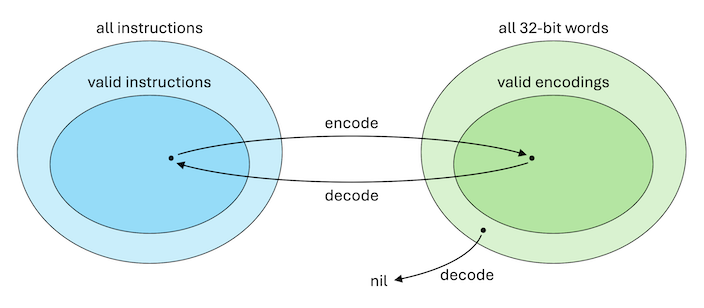
|


|
|---|
Illustration of instruction encoding and decoding.

The lighter blue oval consists of all instructions, i.e. all values of type instr.
The lighter green oval consists of all 32-bit words, i.e. all values of type ubyte32.
Given specific features
Given specific features
The `encode' arrow represents the function encode, which maps each valid instruction to a valid encoding. The validity of the instruction is in the guard of encode. The valid encodings are defined, via encoding-validp, as the image of encode over the valid instructions: thus, the darker green oval is the image of the darker blue oval under encode.
The upper `decode' arrow represents
the witness function
The upper and lower `decode' arrows represent the function decode,
which is defined as the inverse of encode.
When applied to valid encodings in the darker green oval,
decode coincides with
The upper and lower `decode' arrows also represent the executable decoding function decodex, which is proved in decode-is-decodex to be equal to decode.
From decodex-of-encode we also know that if we start with a valid instruction in the darker blue oval, and we encode obtaining a valid encoding in the darker gree oval, then if we apply decode or decodex (they are equal) we go back to the initial valid instruction. So encode is in fact injective, as explicated in encode-injective, and the darker blue and darker green ovals are in bijective correspondence, with encode and decode (or decodex) as the bijections between them.